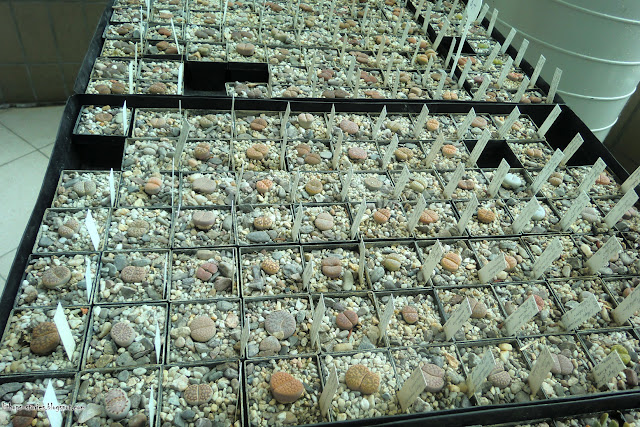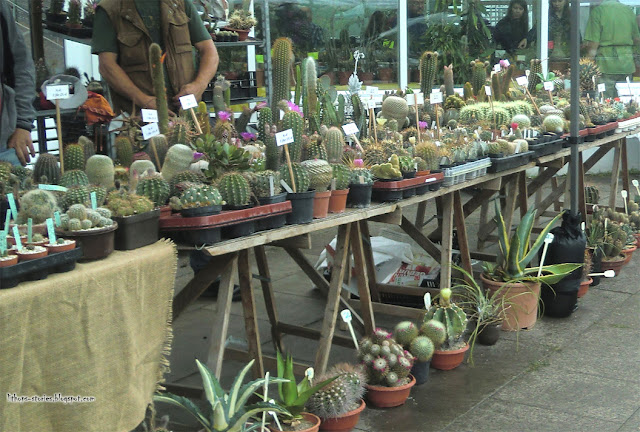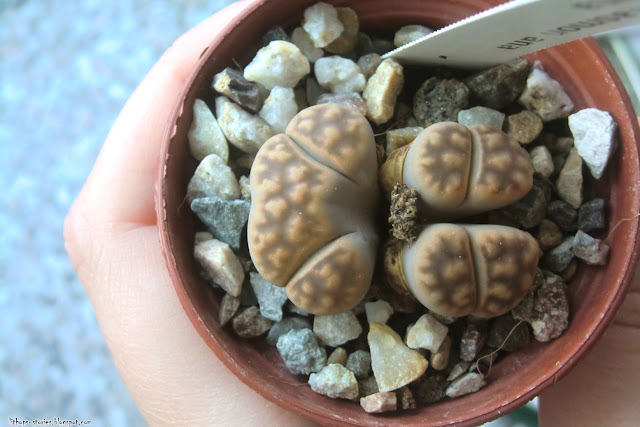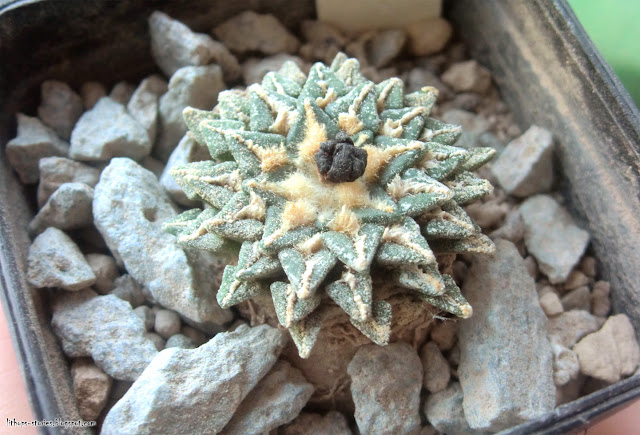My windowsill is so depressing in winter.
I mean it. Forget the conophytums - even winter-growers look weak and sad, as if they had given up and decided to go back to sleep right after waking up. And it is so dark outside I can not even give them a boost of fertilizer. Knowing my conditions they will simply go straight from weak and thirsty to weak and stretched. Lithops are looking scruffy due to leaf change. That's normal. But not exactly pleasing to the eye. Anacampseros are all in their winter mood of "goodbye cruel world". It doesn't help to remind myself that they'll recover in the spring, because... what if they won't? And all the green color and stretching that seems to be everywhere I look. Annoying.
Do I whine like this every winter? Quite possibly. Do I get exited and enthusiastic when spring comes? Absolutely!
So let me report on Avonias today. They seem to be the only plants in good shape these days and make me smile whenever I check in on them.
First, just look at this magnificent beast!
I still have this year's seeds of this plant. Email me if you're interested. They are only viable when fresh.
I haven't had much luck growing Avonia from seed. They germinate fine but then dry up before they can gain any weight to support themselves. So far I've managed to grow only two specimens of Avonia albissima multiramosa (kids of the plant above) from seed to relative adulthood.
You can actually see the line when I stopped pushing them to grow and started withholding water. The upper parts are dense and white and pretty as they should be.
Another bunch of Avonia seedlings are these Avonia papyracea ssp. papyracea. They are now one year old and not quite yet out of the woods. I'm still pushing them to grow with frequent waterings. The larger the species, the easier it is to grow it from seed. Av. papyracea are rather large.
I have several Avonia ustulata plants. They seem to like my conditions. As for the plant below, I'm going to cut off the longest branch (it bothers me aesthetically) and root it. Wish me luck.
While taking these pictures, I was thinking "Why am I doing this? They look the same as last year." And so out of curiosity I went into my old picture folders and it turns out I was wrong. They really do grow! Check this out.
Here are the same Avonia quinaria ssp. quinaria kids, growing in the same pot. Okay, there is a difference of almost 2 years between those photos, but still.
The progress of the below Avonia albisima v. grisea is more impressive as it shows how the plants have grown since May. On the second thought maybe I shouldn't have let them do that seeing that they are more green now. Or maybe with my light conditions they would have gotten green no matter what.
And the branch of this Avonia recurvata has really grown since the beginning of the year. And there's a second one growing above it.
Things are happening after all.












































































































































































